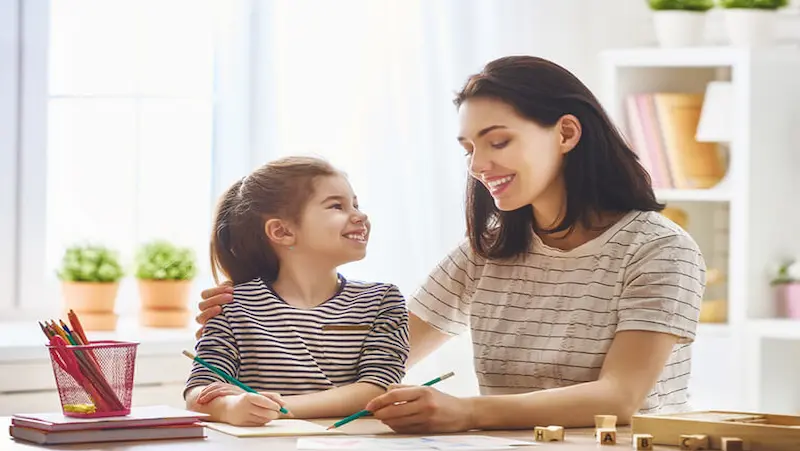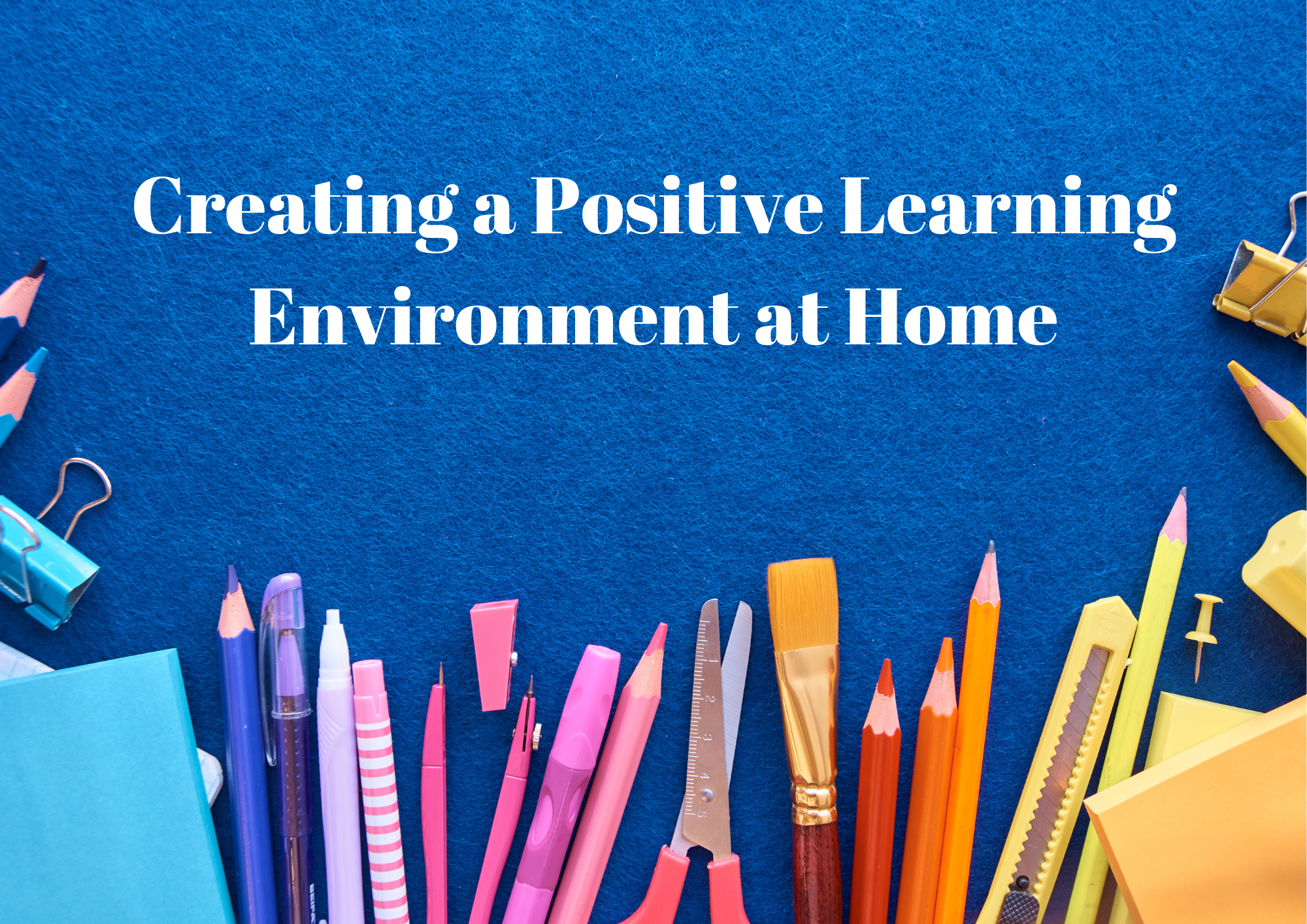Importance of a positive learning environment

In the fast-paced and ever-changing world of education, the role of parents in creating a positive learning environment at home cannot be overstated.
A nurturing atmosphere not only enhances a child’s academic performance but also plays a crucial role in their overall development.
Research consistently shows that children who have a supportive home environment tend to be more engaged in learning, develop better cognitive skills, and display increased emotional resilience.
Therefore, understanding the importance of fostering a positive learning environment is the first step for parents in contributing to their child’s educational journey.
Role of parents in fostering a conducive learning atmosphere at home

Parents are the first and most influential educators in a child’s life. While formal education occurs in schools, the foundation of learning is laid at home.
The role of parents extends beyond helping with homework; it involves creating an environment that encourages curiosity, critical thinking, and a love for learning.
This introductory section sets the stage for the subsequent discussion on practical tips for parents to actively contribute to the creation of a positive learning environment at home.
Physical Environment
Designating a dedicated study space
One of the fundamental aspects of a positive learning environment is having a dedicated study space. This space should be carefully chosen to minimize distractions and promote focus.
Selecting a quiet area away from high traffic zones in the house helps create an environment conducive to concentration. Additionally, ensuring that the study space is well-lit contributes to better visibility and reduces eye strain, creating an inviting space for learning.
Setting up a comfortable and organized workspace
An organized workspace is essential for effective learning. Parents can assist their children by providing storage solutions for books, stationery, and other learning materials.
Creating a comfortable chair and desk arrangement that aligns with the child’s size ensures a physically supportive environment. An ergonomic setup contributes to better posture, reducing discomfort during prolonged study sessions.
Minimizing distractions
A quiet study space is crucial for concentration, and minimizing noise is key. Parents can identify and address sources of distraction, such as loud appliances or nearby activities, to create a peaceful environment.
If possible, noise-canceling headphones or soft background music may be introduced to drown out external disturbances, helping children maintain focus on their studies.
Managing screen time and electronic devices
In the digital age, electronic devices are ubiquitous. While they can be valuable tools for learning, excessive screen time can be detrimental.
Parents should establish guidelines for the use of electronic devices during study hours, ensuring that they are used for educational purposes.
Setting screen time limits and encouraging breaks for physical activities can help strike a balance between technology and a healthy learning environment.
Emotional Support

Encouraging a growth mindset
Fostering a growth mindset is integral to a positive learning environment. Parents can instill in their children the belief that intelligence and abilities can be developed through effort and perseverance.
Instead of focusing solely on achievements, praising the effort and hard work a child puts into their studies reinforces the idea that learning is a continuous process, encouraging a positive attitude toward challenges.
Emphasizing the learning process over grades
While academic achievements are important, it’s equally crucial for parents to emphasize the value of the learning process itself. Encouraging a child to explore subjects, ask questions, and delve into their interests helps cultivate a genuine love for learning.
By shifting the focus from grades to the joy of discovery, parents contribute to a positive emotional connection with education.
Creating a safe space for mistakes
Mistakes are an inevitable part of the learning journey. Creating a safe space for children to discuss their challenges and mistakes without fear of judgment is essential.
Parents can initiate open dialogues about difficulties their child may be facing, providing support, guidance, and reassurance. This open communication fosters resilience and a willingness to tackle challenges head-on.
Celebrating learning opportunities from failures
Rather than viewing failures as setbacks, parents can help children see them as valuable learning opportunities. Celebrating the lessons learned from mistakes shifts the focus from the negative aspects of failure to the positive aspects of growth.
This mindset not only builds resilience but also nurtures a sense of curiosity and a willingness to take on new challenges.
Establishing a Routine
Setting a consistent schedule
Consistency is key to creating a positive learning environment, and establishing a routine is an effective way to achieve this.
Parents can work with their children to set a consistent daily schedule that includes designated study and break times. Balancing these periods ensures that children can maintain focus during study sessions while also allowing for necessary breaks to recharge.
Aligning with school schedules
Syncing the home learning routine with the school schedule helps create a seamless educational experience. Knowing when assignments are due, when classes occur, and when assessments take place allows parents to provide appropriate support and ensures that children are well-prepared for their academic responsibilities.
Incorporating variety in activities
Variety is essential in maintaining engagement. Parents can introduce interactive and hands-on learning activities to break the monotony of traditional study sessions.
This might involve science experiments, art projects, or educational games that align with the curriculum. Such activities not only reinforce learning but also make the educational experience enjoyable.
Offering a mix of individual and group activities
While some children thrive in solitary study environments, others benefit from collaborative learning experiences. Parents can identify their child’s preferred learning style and incorporate a mix of individual and group activities accordingly. This ensures that the learning environment caters to the child’s unique needs and preferences.
Communication and Involvement
Regular check-ins with children
Effective communication is a cornerstone of a positive learning environment. Regularly checking in with children about their day, experiences, and any challenges they may be facing establishes an open line of communication.
This not only allows parents to stay informed but also shows children that their thoughts and feelings are valued.
Discussing any concerns or challenges
Encouraging children to express their concerns or challenges is crucial for addressing issues promptly. When parents actively listen and engage in discussions about difficulties, they can provide the necessary support and guidance.
Collaborating with teachers
Maintaining open communication with teachers is vital for a holistic understanding of a child’s academic progress. Attending parent-teacher meetings provides an opportunity to discuss a child’s strengths, areas for improvement, and any specific needs they may have.
This collaborative effort ensures that parents and teachers work together to create the best possible learning experience for the child.
Staying informed about academic progress
Regularly reviewing a child’s academic progress helps parents stay informed and engaged. This involves monitoring grades, assignments, and feedback from teachers. By staying actively involved in their child’s education, parents can identify areas that may require additional support and address them proactively.
Encouraging a Love for Learning
Connecting lessons to real-life experiences
Learning becomes more meaningful when it is connected to real-life experiences. Parents can help children see the relevance of their studies by relating subjects to everyday scenarios.
This might involve discussing how math is used in cooking, exploring the science behind everyday phenomena, or understanding the historical context of current events.
Exploring educational resources beyond textbooks
Textbooks provide a foundation, but parents can enhance their child’s learning experience by exploring educational resources beyond the curriculum. This could include visits to museums, participation in educational programs, or accessing online platforms that offer supplementary materials. Diversifying learning resources keeps education dynamic and fosters a genuine interest in acquiring knowledge.
Incorporating creativity and exploration
Creativity is a powerful catalyst for learning. Parents can encourage their children to undertake projects or experiments that align with their interests. Whether it’s a science experiment, a writing project, or an art creation, these activities not only reinforce academic concepts but also nurture creativity and a sense of accomplishment.
Supporting hobbies and extracurricular interests
Beyond the academic curriculum, parents can support their child’s personal interests and hobbies. Involvement in extracurricular activities, whether it be sports, music, or other pursuits, contributes to a well-rounded education. These activities provide opportunities for skill development, social interaction, and the cultivation of a passion for lifelong learning.
Conclusion
Summarizing key points
In conclusion, creating a positive learning environment at home is a multifaceted endeavor that involves the physical setup, emotional support, routine establishment, effective communication, and encouragement of a love for learning.
Parents play a pivotal role in shaping this environment, influencing their child’s attitude towards education and fostering a sense of curiosity and resilience.
Reinforcing the positive impact of a supportive home learning environment
The positive impact of a supportive home learning environment extends far beyond academic success. Children who grow up in an environment that values learning develop essential life skills such as critical thinking, problem-solving, and effective communication.
Moreover, they are more likely to approach challenges with confidence and a growth mindset. By actively implementing the tips discussed in this guide, parents can contribute significantly to their child’s overall development and set the stage for a lifelong love of learning.









